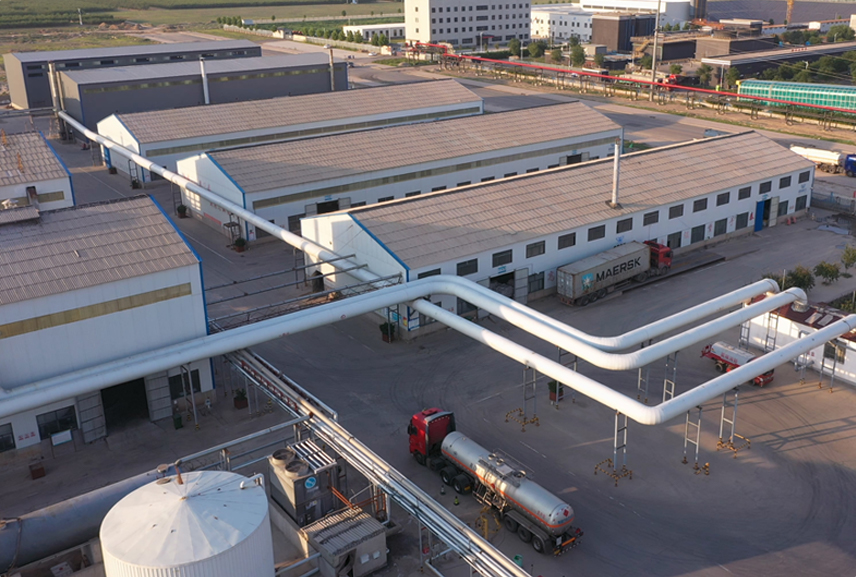HPMC plays an important role in self-leveling mortar.
HPMC, or hydroxypropyl methylcellulose, is a cellulose ether obtained by chemical modification of natural cellulose. In self-leveling mortar, the main functions of HPMC include: Thickening effect: HPMC has a high viscosity and can effectively increase the viscosity of self-leveling mortar, making it have good fluidity. At the same time, its thickening effect can prevent the mortar from segregating and bleeding during the construction process, ensuring the construction quality and efficiency. Water retention effect: HPMC has good water retention performance and can effectively retain moisture in the mortar. This can extend the drying time of the mortar and fully hydrate the mortar, thereby improving the strength and durability. Plasticizing effect: HPMC can increase the plasticity of self-leveling mortar, making it have good plasticity and operability during the construction process. This helps prevent cracking and shrinkage of the mortar and improves the construction quality and efficiency. Improving construction performance: HPMC can improve the construction performance of self-leveling mortar, making it have good fluidity and operability during the construction process. Through its thickening, water retention and plasticizing effects, it can reduce waste and rework during construction and improve construction efficiency and quality.
In summary, the application of HPMC in self-leveling mortar, through its unique physical and chemical properties, significantly improves the performance and quality of mortar, and also improves construction efficiency and engineering quality.
| Item | Unit | Standard Specifications |
| Appearance | / | White powder,free flowing |
| Loss on drying | % | 4-6 |
| Residue | % | 3.5 |
| Methyl | % | 49-26 |
| Hydroxypropyl | % | 7-14 |
| Ph value(25C) | / | 6-8.5(neutral) |
| Gel temperature | ℃ | 60 degree/75 degree |
| degree of fineness | mesh | 100 mesh,>96%80 mesh,>100% |
| Apparent density | g/m3 | 0.4-0.6 |
| proportion | g/L | 420-520 |
| Surface Tension(2%solution) | dyn/cm | 42-56 |
| Water retention | % | ≥92 |
| Light Transmittance | % | 65-90 |
| Carbonization temperature | ℃ | 280-300 |
| Discoloration temperature | ℃ | 190-200 |
Related Products
HPMC (Hydroxypropyl Methyl Cellulose)
Better water retention and open time
Better strength development of the mortar
Improved workability
Increased adhesion to a variety of substrates
MHEC (Hydroxyethyl methyl cellulose)
High thickening efficiency and wide range of viscosity grades
Good compatibility
Excellent stability
Good protective colloid activity
RDP (Re-Dispersible Polymer Powder)
High flexibility, good film formation
High water resistance for increased open time
High hydrophobicity, ability to bridge cracks
Viscous texture and high workability
Related Application Categories
HPMC is widely used in drymix mortar industry. Could be soluble in water and form the transparent solution. As the important additives in mortar, Hydroxyproypl methyl Cellulose could increase the water retention, increase the workability and increase open time etc.
HPMC cellulose ether enhances mortar and board caulking agent by improving anti-cracking shrinkage and strength, minimizing the risk of cracks, and extending working time. With superior water retention properties, it prevents issues like fast drying and poor hardening, ensuring optimal hydration.
Daily Chemical Detergent Grade HPMC Cellulose
Daily chemical Detergent grade hydroxypropyl methyl cellulose (HPMC) is a synthetic high molecular polymer prepared by chemical modification with natural cellulose as raw material.
One of the main functions of HPMC in shampoo is viscosity control. By adjusting the viscosity of the shampoo, manufacturers can provide products with the desired texture, making it easier to apply and distribute on the hair.
Hydroxypropyl methylcellulose (HPMC) has emerged as a game-changing additive in the evolving world of body wash manufacturing.
The working principle of laundry detergent is similar to that of traditional washing powder and soap, and the active ingredients are all surfactants.
FAQ
Regarding the relationship between viscosity and temperature in HPMC (HPMC viscosity), what should be noted in practical applications?
What are the differences between HPMC and MC?
What are the formulations for interior and exterior wall putty powder?
What is the application of HPMC in putty powder, and what causes the formation of bubbles in putty powder?


Get in Touch
Interested in how our HPMC can enhance your personal care formulations? Contact us to request a free sample and experience the superior quality of our cellulose ether products.
Related News and Blogs
24
Aug., 2024
Let's meet Indonesia Coatings Exhibition 2024
The 10th Paintistanbul & Turkcoat Fair will be held at the Istanbul Exhibition Center in Turkey from May 8th...
19
Nov., 2021
What Causes A Cracked Putty Layer?
The one-off scraping thickness of the putty is directly proportional to the curing shrinkage strength, which increases in proportion to the tendency of the putty to crack.
04
Nov., 2021
Whether you are carrying out small repairs or building walls, knowing how to mix the mortar needs to be precise. If the mortar is too dry, the blocks will not stick together properly. If it is too wet, flowing mortar can spill out of the joints, resulting in wasted time and materials for clean-up.
25
Oct., 2021
The Effect of Winter Construction Temperature on Tile Adhesives
As we all know, tile adhesive is generally made from cement and mixed with various additives. It is mixed with water at the construction site and then applied to the wall or floor.

Get in Touch
Interested in how our HPMC can enhance your personal care formulations? Contact us to request a free sample and experience the superior quality of our cellulose ether products.